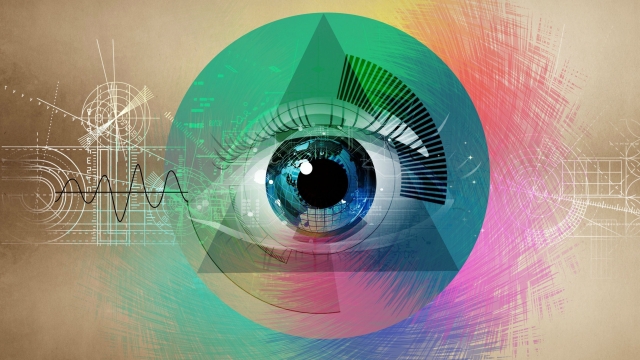Retinopathy is a condition that affects the delicate tissues of the eyes, specifically the retina. It encompasses various eye diseases that can lead to vision impairment or even loss if left untreated. As a commonly observed complication of diabetes, diabetic retinopathy is the most prevalent form. However, retinopathy can also occur in individuals without diabetes due to factors like aging or other underlying health conditions.
![]()
Ophthalmology plays a vital role in the diagnosis, management, and treatment of retinopathy. Specialized ophthalmologists are equipped with the expertise and knowledge to identify early signs of retinal damage through comprehensive eye examinations and advanced imaging techniques. They work closely with patients to ensure timely intervention and preventive measures are taken to protect their vision.
One critical aspect of managing retinopathy is regular diabetic eye screening. This preventive measure enables the early detection of any abnormalities in the retina, facilitating early intervention and treatment. Along with diabetic retinopathy, glaucoma is another eye condition that often requires attention in patients with retinopathy. Understanding the relationships between retinopathy and other ocular conditions is essential for comprehensive patient care. By exploring the nuances of retinopathy, we can shed light on its impact on vision and emphasize the importance of regular eye check-ups and treatment adherence.
1. Ophthalmology and the Importance of Eye Screenings
Eye screenings play a crucial role in ophthalmology and are particularly important for detecting and managing conditions such as retinopathy. With the increasing prevalence of diabetes, regular eye screenings have become a key aspect of healthcare. By identifying retinopathy at an early stage, ophthalmologists can effectively intervene to prevent vision loss and provide timely treatment.
Retinopathy, a condition characterized by damage to the retina, is often associated with diabetes. Diabetic eye screenings are essential for individuals living with diabetes as they allow ophthalmologists to closely monitor any changes in the retina caused by the disease. Early detection of retinopathy enables prompt treatment, which can significantly reduce the risk of vision impairment or blindness.
In addition to retinopathy, eye screenings also serve as an opportunity to assess for other ocular conditions, including glaucoma. Glaucoma is a condition that causes damage to the optic nerve and is often referred to as the "silent thief of sight" due to its gradual progression and lack of noticeable symptoms in the early stages. Regular screenings allow ophthalmologists to identify glaucoma early, leading to better outcomes and preserved vision for patients.
Overall, ophthalmology and eye screenings play a critical role in identifying, managing, and treating conditions like retinopathy and glaucoma. These screenings allow ophthalmologists to detect and intervene in the early stages of eye diseases, ultimately helping individuals maintain their visual health and quality of life.
2. Understanding Retinopathy: Causes and Symptoms
Retinopathy is a condition that affects the retina, which is the light-sensitive tissue at the back of the eye. It is commonly associated with certain underlying health conditions, particularly diabetes. In this section, we will delve into the causes and symptoms of retinopathy, shedding light on its impact on vision.
One of the main causes of retinopathy is uncontrolled or poorly managed diabetes. High blood sugar levels damage the blood vessels in the retina over time, leading to the development of retinopathy. The duration of diabetes and the level of blood sugar control play crucial roles in the onset and progression of this condition. Therefore, it is essential for individuals with diabetes to adhere to their treatment plans and regularly monitor their blood sugar levels to reduce the risk of retinopathy.
The symptoms of retinopathy may vary depending on the stage and severity of the condition. In the early stages, individuals may not experience any noticeable symptoms. However, as retinopathy progresses, symptoms may include blurred or distorted vision, floaters or spots in the field of vision, impaired color vision, and difficulty seeing at night. It is worth mentioning that retinopathy can affect one or both eyes, and the symptoms may differ between them.
Apart from diabetes, retinopathy can also be associated with other eye conditions such as glaucoma. Although the exact relationship between retinopathy and glaucoma is still being studied, some research suggests that the two conditions may coexist or share common risk factors. Therefore, in some cases, individuals with retinopathy may also need to be screened for glaucoma to ensure comprehensive eye health monitoring.
In the next section, we will explore the importance of early detection and diagnosis in managing retinopathy. Stay tuned to learn more about the available screening methods and potential treatment options.
3. Retinopathy and its Relation to Glaucoma
Retinopathy, a common condition in ophthalmology, is characterized by damage to the blood vessels in the retina, resulting in impaired vision. This condition primarily affects individuals with diabetes, and it is often diagnosed through diabetic eye screening. However, it is important to understand the link between retinopathy and another eye condition known as glaucoma.
Glaucoma, like retinopathy, is a sight-threatening condition that affects the optic nerve. It causes increased pressure within the eye, resulting in progressive damage. Interestingly, studies have shown that individuals with retinopathy are at a higher risk of developing glaucoma compared to those without retinal damage.
The relationship between retinopathy and glaucoma is multifaceted. It is believed that the underlying mechanisms contributing to both conditions may share common pathways. Additionally, retinopathy can cause structural changes in the retina, which can subsequently affect the optic nerve and increase the susceptibility to glaucoma.
In conclusion, individuals with retinopathy should be aware of the potential risk of developing glaucoma. Regular eye screenings and early detection can help in managing both conditions effectively, preventing further vision loss.
